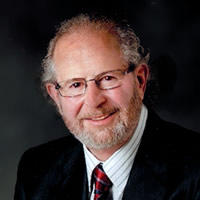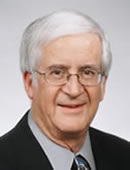A standard can be defined as a document issued by a recognized agency, and dealing with design and/or safety requirements relating to a specific product or type of activity. Such agencies include the U.S. Occupational Safety and Health Administration (051-IA) and the American National Standards Institute (ANSI). OSHA standards are generally legally binding for an employer, while ANSI standards are generally of an advisory nature. The term "industry standard," however, is ordinarily taken to have a broader meaning, including formal standards as just defined, and also including designs and procedures not required in formal standards, though prevailing in a specific industry, and which represent generally accepted custom and practice.
Because custom and practice is (by definition) something that is actually in existence, and is therefore accepted, there is an understandable tendency to consider it "acceptable." This conclusion is not automatically justified, however, for two reasons. First, custom and practice within a given industry generally varies over a wide range, from bad to good, from unsafe to safe. For example, although many punch presses are fitted with two-hand controls to prevent the operator from having either hand in the dangerous area as the ram of the press descends, it is common for the operator-or his employer-to "tie down" one of the controls so that the press can be operated with only one hand, leaving the other hand free to inadvertently enter the dangerous area as the ram descends. (The reason for this dangerous practice is that it speeds up production.) Thus, this form of custom and practice is not acceptable as an industry standard. It follows that only good custom and practice should be used as an industry standard.
The second consideration is that there may be no significant amount of "good" custom and practice within an industry. For example, in the 1940's it was virtually universal practice to operate punch presses without safeguards (such as the two-hand control just described), with the result that loss of fingers was common in the industry. In the absence of good custom and practice, there was no basis for an acceptable industry standard.
In the first case, where some good custom and practice exists, analysis and judgment is required to distinguish it from bad custom and practice. This generally requires the services of an engineer versed in the science of human factors (which in the present context deals with the foreseeable behavior of normal, technically untrained people under conditions of potential danger), so that there can be made a reasonable evaluation of the danger to workers in various circumstances. In this respect, an engineer working outside of the industry will tend to have an advantage over an engineer within the industry, who may be prejudiced by familiarity with the methods used in the industry, or by some degree of loyalty to the industry.
In the second case, where there is no good custom and practice within the industry, the need for dispassionate engineering judgment is even greater. Further, the engineer should be familiar with relevant techniques outside of the industry in question, so as to determine whether such techniques can be used to improve custom and practice within the subject industry. As a case in point, consider the application of a "dead-man" control to lawnmowers, for the purpose of automatically stopping the rotating blade when the operator takes his hands off the push-bar, for clearing a clump of grass which has become lodged in the structure of the lawnmower at a point dangerously near the blade. The dead-man concept, although long used in other types of machinery, has only recently received substantial (and badly needed) acceptance in lawnmowers.
In summary, in contrast to formal standards as defined above, an industry standard based on custom and practice may be relatively indefinite, requiring engineering analysis, judgment and explanation (especially in the area of human factors) in order to be used as a valid criterion for safe design and practice.
Kristopher J. Seluga, PE, is a Mechanical Engineering, Accident Reconstruction, Biomechanics, and Safety Expert with over 20 years of experience. He received his Bachelor's and Master's degrees from the Mechanical Engineering department at MIT where he worked on the development of novel three-dimensional printing technologies. Mr. Seluga is also a licensed Professional Engineer in New York and Connecticut, and has served as a member of the ANSI engineering committee for the Z130.1 and Z135 standards for golf cars and PTV's. His research interests and peer reviewed publications span the topics of Motor Vehicle Dynamics, Product Safety, and Biomechanics.
©Copyright - All Rights Reserved
DO NOT REPRODUCE WITHOUT WRITTEN PERMISSION BY AUTHOR.











